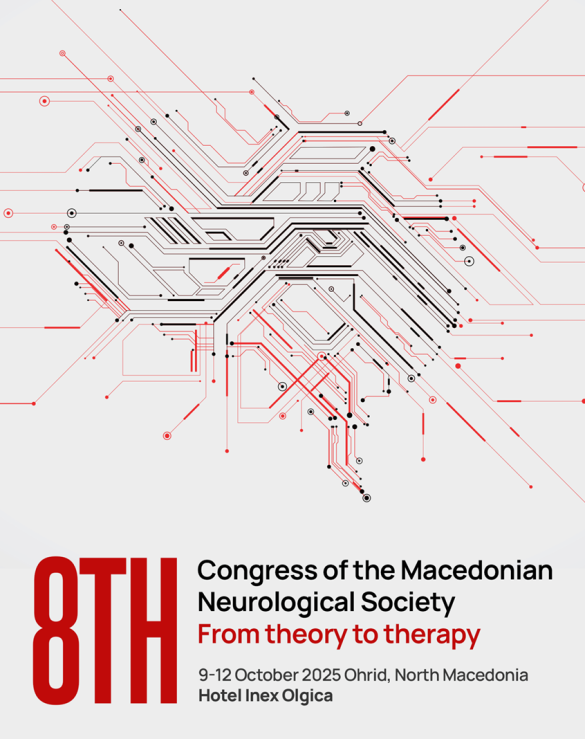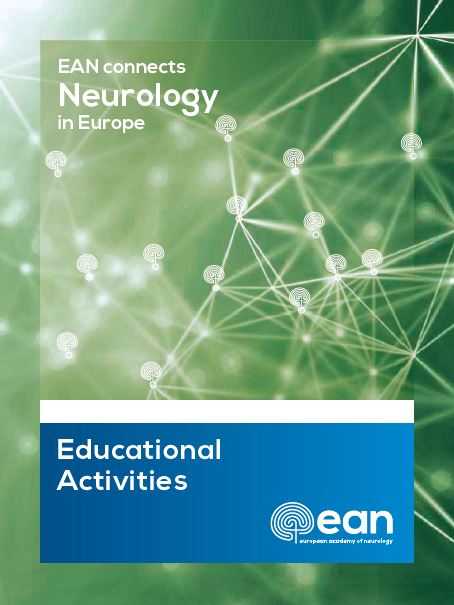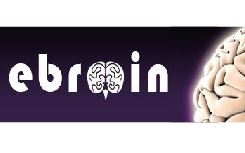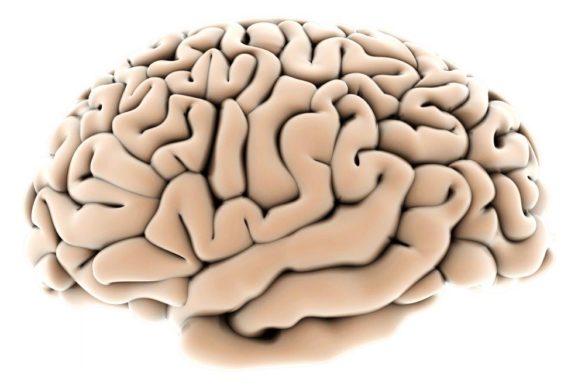by Liliya Zvyagina
A 30-year-old woman presented with severe headache, nausea and vomiting to the hospital for infectious diseases and was admitted.
She reported a spontaneous sudden onset of headache with nausea and vomiting 3 days ago. She described the headache as generalized pressure, developing a maximum intensity within 1 minute, associated with nausea and vomiting, but no other symptoms. The headache progressively worsened. The patient had delivered her second child 6 weeks ago without complications. The first pregnancy and delivery had also been normal.
The patient denied head trauma, drug use, tobacco use, alcohol consumption. She and her relatives related the present illness to toxic food exposure at a Café four days before hospital admission. She did not recall any significant medical problems in her family history. There was no previous history of diseases, pregnancy-related hypertension or eclampsia, and no medication intake. But she indicated physical overload and lack of sleep due to child nursing.
On admission her temperature was 37.5°C, blood pressure was 110/80mmHg; tachycardia, pulse rate: 90 beats/min and regular. She was awake and fully oriented. Heart and lungs were normal, abdomen was soft, and the skin was pale. During the duration of hospitalization (3 days), the patient underwent various diagnostic procedures.
The general physical examination revealed no abnormalities in the head, neck, chest, abdomen, or extremities. She had no neurological deficits during the first neurological examination and her medical history did not reveal any pathological signs; meningeal symptoms were negative.
Laboratory examination revealed light leukocytosis, and increase of RES, but other values were unremarkable; liver enzymes, Ca, Mg, Phos, Albumin, Glucose, NA, normal results for renal function, urinanalysis, international normalized ratio, partial thromboplastin time, thrombin time, antithrombin III, functional protein C, protein S, D-dimers, fibrin monomers, and negative protein C resistance.
Cerebrospinal fluid (CSF) examination showed no cells, normal protein and glucose and no xanthochromia. She was investigated in the Emergency Department with computed tomography (CT) scan within 24h after arrival; it showed no abnormalities. (On retrospection it has been noticed that a mild degree of diffuse arterial spasm of the intracranial vessels was probably present).
Figure 1a + Figure 1b
The diagnosis was alimentary gastroenteritis: Significant nausea, vomiting and temperature of 37.5°; headache had been evaluated as a reaction on alimentary toxic infection; laboratory tests: leukocytosis, increasing rate of erythrocyte sedimentation and normal SSF; no abnormal CT scan sign.
The patient started treatment with antibiotics therapy and intravenous rehydration solutions, vitamins and 200mg of ibuprofen.
The patient complained of further severe paroxysms of diffuse headache with photophobia and phonophobia; pain worsened on exertion.
She was examined a second time by a neurologist.
Mental status showed difficulty in concentrating and agitation; speech was normal; comprehension was not disturbed. She was in severe distress due to pain, fully alert, oriented, and in panic.
Neurological examination revealed that cranial nerves were intact, bilateral brisk and symmetric deep tendon reflexes but without clonus. Ocular signs had horizontal nystagmus, ataxia; sensory systems were normal.
The following night she became comatose and developed left side focal neurological deficits. The radiologist diagnosed intracerebral haemorrhage on CT; he suspected a venous angioma in the right occipital lobe, with an enlarged central draining vein; this was not confirmed.
The CT-Scan showed several intraparenchymal haematomas in the right posterior temporal-parietal lobe, diameters 0.7-1.5 cm; 2.0 cm; with perifocal oedema; diffuse intraventricular haemorrhage, particularly in the right lateral, 3rd and 4th ventricles; an early hydrocephalus; middle structures displaced on the left side; an 0.4 cm right-to-left subfalcine herniation; oedema of the cerebral cortex. Basal cisterns were narrow.
Figure 2 and Figure 3
The patient was transferred to the neurosurgical department for further management with the following diagnosis: Right side haemorrhagic stroke, intraparenchymal and diffuse intraventricular haemorrhage.
CT angiogram and 3-D reconstruction format showed multifocal stenosis with post-stenotic dilation in the cerebral arteries. Vasoconstriction was present in the territories of the anterior, middle, and posterior cerebral arteries.
Figure 4 and Figure 5
MRA was performed at the neurosurgery department. No AVM, or venous angiomas were found; diffuse, segmental multifocal arterial narrowing was seen suggestive of vasospasm or vasculitis. Transcranial Doppler ultrasounds, performed several times, revealed high flow velocities in the major cerebral arteries.
Final diagnosis was: Right-sided haemorrhagic stroke with intracerebral parenchymal and intraventricular haematomas. Postpartum cerebral angiopathy, reversible cerebral vasoconstriction syndrome (RCVS), transformed to intracranial parenchymal and intraventricular haemorrhage, with dense left-sided haemiplegia and left facial palsy.
Comment by the author:
General Discussion
Intracranial haemorrhage (ICH) is one of the most disabling forms of stroke and occupies about 15% of all strokes. Young adults have a broad spectrum of potential aetiologies of strokes that includes subarachnoid and intraparenchymal haemorrhage caused by haematological disorders, dissections, trauma, oral contraceptive use, migraine, substance abuse, pregnancy and post-partum states [11].
Stroke is a rare event in pregnant women, mostly related to high blood pressure. The risk appears to be higher in the post-partum period, perhaps because of the sudden change in circulation and hormone levels.
Post-partum cerebral angiopathy (PPCA) is a rare form of reversible cerebral vasoconstriction syndrome which appears from 1 day to 6 weeks of post-partum period for which no incidence rate is cited in the literature [12, 14]. A recent large, population-based study found the post-partum state rather than pregnancy itself to be associated with an increased risk of cerebral infarction and haemorrhage [10].
Calabrese et al. [1] have suggested that post-partum cerebral angiopathy may represent a continuum of vascular pathology, with an initial vasospastic lesion ending in a true arteritis. Affected cerebral blood vessels occasionally show signs of inflammation on histological investigation. These inflammatory changes seem to be mainly chronic and secondary to prolonged vasoconstriction, suggesting functional vasoconstriction as the primary pathophysiological process. Haemorrhagic stroke which develops in post-partum period is not well recognized, as it could be cerebral inflammatory vasculitis or transient vasoconstriction related to the hormonal events of pregnancy and the post-partum period.
Most common incorrect diagnoses are: migraine, tension headache, post-partum pre-eclampsia/eclampsia, vasculitis, ICH and SAH due to other etiology. Failure to obtain a computed tomography (CT) scan and MRA was the most common diagnostic error (73%) [1]. Only 11 cases of PPCA with ICH have been documented in the literature. [18]
Recognition of this condition is important because of the need for appropriate treatment [9]
Discussion of our case
The patient in this case study presented with the classic signs and symptoms of post-partum cerebral angiopathy. The most common initial sign for PPCA condition is the sudden onset of a severe headache. Sudden onset of a severe headache appeared 6 weeks post-partum and the headache progressively increased, and finally ICH occurred. Multiple thunderclap headaches recurring nearly every day over 1–4 weeks are almost pathognomonic [1,3,6]. Many authors confirm that a recurrent thunderclap headache over a few days to 2 weeks is the clinical hallmark of RCVS [1,4,5,14]. Other symptoms include nausea, vomiting, and a decreased level of consciousness and focal neurological deficits [5].
Laboratory findings include increased erythrocyte sedimentation rate and leucocytes. Most of these findings reflect a systemic response to the release of inflammatory cytokines.
CT and magnetic resonance scans are usually normal initially but later show cerebral ischemia, haemorrhage, or oedema, or all three. The CSF is usually normal and transcranial Doppler reveals high flow velocities. Cerebral angiogram usually reveals areas of stenosis and dilation in multiple intracranial vessels [19]. Our patient’s angiographic findings were consistent with reports in the literature.
Headaches are one of the most common symptoms that neurologists evaluate. The very important symptom is thunderclap headaches, our patient had never had before. The differential diagnosis for headache includes thrombotic phenomena, intracranial neoplasm, head trauma, pituitary apoplexy, cervical artery dissection, ischemic stroke, acute hypertensive crisis, idiopathic epilepsy, infection (meningo-encephalitis), post-partum angiopathy and reversible posterior leucoencephalopathy syndrome, subarachnoid haemorrhage, intracerebral haemorrhage.
Migraine headaches classically cause severe headache, nausea and vomiting. Migraine, particularly with aura, is well established as a risk factor for ischemic stroke but migrainous haemorrhage stroke is uncommon [2,8]; but some authors associate migraine with aura with a significant increase of the risk of haemorrhagic stroke compared with patients without migraine [7]. Our patient had no previous or family history of migraine.
Patients with sinus thrombosis may also develop sudden (thunderclap) headache, and the post-partum period is a risk factor of thrombotic events; but this has to be confirmed by imaging and laboratory test (coagulopathy, polycythaemia as an etiologic factor); sinus thrombosis was excluded in our case.
Symptoms of SAH include severe headache with rapid onset (“thunderclap headache”), in the setting of neck stiffness, vomiting, confusion or a lowered level of consciousness, and sometimes seizures. [17]. It is important to note that these symptoms may be mistaken for pre-eclampsia/eclampsia, especially when proteinuria is present. The diagnosis is made with a CT scan, or lumbar puncture.
Typically for hypertensive encephalopathy the blood pressure will approach or even exceed 250/150mmHg; associated reversible posterior leucoencephalopathy syndrome could be suspected, but it may occur due to malignant hypertension in women with genuine eclampsia [13,15]. Our patient had normal BP and there was no eclampsia in her history.
Haemorrhagic stroke causes headache, seizures, nausea and vomiting. Symptoms usually develop suddenly, without warning, often during activity. It shows almost immediately on CT film [19].
The patient and her relatives associated her symptoms with alimentary infection or toxicity. Infectious aetiologies typically result in an acute onset of symptoms. Viral gastroenteritis is particularly common; however, bacteria or their toxins may also be the cause. Infectious and toxic causes of nausea and vomiting are usually self-limiting. Nausea and vomiting caused by ingestion of a toxin such as the enterotoxin in staphylococcal food poisoning or the toxin produced by Bacillus cereus typically occur one to six hours after ingestion and last only 24 to 48 hours. [16] Sudden severe headache is not a symptom of alimentary toxicity, and should warn against this diagnosis.
Infection (meningo-encephalitis) could cause the vomiting and the headache. But the clinical picture was not supportive, there were no meningeal signs; lumbar puncture revealed normal CSF.
Brain tumours and other intracranial mass lesions may cause intermittent bouts of vomiting and headache. These entities were excluded by CT.
References:
1. Calabrese LH, Gragg LA, Furlan AJ. Benign angiopathy: a distinct subset of angiographically defined primary angiitis of the central nervous system. J Rheumatol. 1993; 20:2046–2050
2. Calado, S., Vale-Santos, J., Lima, C., & Viana-Baptista, M. (2004). Postpartum cerebral angiopathy: Vasospasm, vasculitis, or both? Cerebrovascular Disease, 18(4), 340-341
3. Chen SP, Fuh JL, Chang FC, et al. Transcranial color doppler study for reversible cerebral vasoconstriction syndromes. Ann Neurol 2008;63:751–7.
4. Dodick DW, Brown RD, Britton JW, et al. Nonaneurysmal thunderclap headache with diffuse, multifocal, segmental, and reversible vasospasm. Cephalalgia 1999;19:118–23.
5. Dodick DW, Eross EJ, Drazkowski JF, Ingall TJ. Thunderclap headache associated with reversible vasospasm and posterior leukoencephalopathy syndrome. Cephalalgia 2003;23:994-7.
6. Ducros A, Boukobza M, Porcher R, et al. The clinical and radiological spectrum of reversible cerebral vasoconstriction syndrome. A prospective series of 67 patients. Brain 2007;130:3091–101.
7. International Stroke Conference 2007: Abstract 22.Migraine and risk of haemorrhagic stroke in women: prospective cohort study.BMJ September 10, 2010 341:c3659
8. Garner BF, Burns P, Bunning RD, Laureno R. Acute blood pressure elevation can mimic arteriographic appearance of cerebral vasculitis: a postpartum case with relative hypertension. J Rheum. 1990;17:93–97.[Medline] [Order article via Infotrieve]
9. Geraghty JJ, Hock DB, Robert ME, Vinters HV. Fatal puerperal cerebral vasospasm and stroke in a young woman. Neurology. 1991;41:1145–1147.
10. Kittner SJ, Stern BJ, Feeser BR, Hebel JR, Nagey DA, Buchholz DW, Earley CJ, Johnson CJ, Macko RF, Sloan MA, Wityk RJ, Wozniak MA. Pregnancy and the risk of stroke. N Engl J Med. 1996;335:768–774
11. Knepper LE, Giuliani MJ. Cerebrovascular disease in women. Cardiology. 1995;86:339–348.[Medline] [Order article via Infotrieve]
12. Konstantinopoulos, P. A., Mousa, S., Khairallah, R., & Mtanos, G. (2004). Postpartum cerebral angiopathy: An important diagnostic consideration in the postpartum period. American Journal of Obstetrics and Gynecology, 191(1), 375-377
13. Pula JH, Eggenberger E (November 2008). “Posterior reversible encephalopathy syndrome”. Curr Opin Ophthalmol 19 (6): 479–84. doi:10.1097/ICU.0b013e3283129746. PMID 18854692.primary angiitis of the central nervous system. J Rheumatol. 1993;20:2046–2050
14. Slivka A, Philbrook B. Clinical and angiographic features of thunderclap headache. Headache 1995;35:1–6.
15. Spitzer C, Mull M, Rohde V, et al. Non-traumatic cortical subarachnoid haemorrhage: diagnostic work-up and aetiological background. Neuroradiology 2005;47:525–31.
16. Trommer BL, Homer D, Mikhael MA. Cerebral vasospasm and eclampsia. Stroke 1988; 19:326 9. 43. 5. Tuttleman R, Gleicher N. Central nervous system hemorrhage complicating pregnancy. Obstet Gynecol. 1981;58:651–656
17. van Gijn J, Kerr RS, Rinkel GJ (2007). “Subarachnoid haemorrhage”. Lancet 369 (9558): 306–18.
18. Williams TL, Lukovits TG, Harris BT, et al. A fatal case of postpartum cerebral angiopathy with literature review. Arch Gynecol Obstet 2007;275:67–77.
19. Ursell, M. R., Marras, C. L., Farb, R., Rowed, D. W., Black, S. E., & Perry, J. R. (1998). Recurrent intracranial hemorrhage because of postpartum cerebral angiopathy. Stroke, 29, 1995-1998
Liliya Zvyagina is neurologist, working at the Odessa Regional Medical Center, Odessa, Ukraine. She is a member of the EFNS Teaching Course Sub-committee
Comment by Gian Luigi Lenzi
This case presented by Dr Liliya Zvyagina from Odessa is particularly interesting because of many points that regard the neurological evaluation and diagnostic categorization of headaches presenting to a Hospital DEA.
This 30-year-old lady presented to Odessa’s Hospital DEA because of a severe and “new” headache. Well, headache is scored 7th in the relative frequency of requests for medical consultation. For USA, every year more than 20 million consultations are due to headache.
The patient was referring her headache to food poisoning. Furthermore, the neurological examination performed at admission did not show any abnormal signs. Blood tests were all normal but leukocyte count was slightly increased and RES was also increased. CSF was normal (But we do not know for sure if the CSF pressure was measured!).
It would have been correct to label the condition as a headache due to a general infection (in this case a possible Salmonella infection) with some meningeal reaction (“meningism”).
As mandatory in all acute headaches, this patient was examined with CT scan on the 20/05/2011. And the Neuroradiologist evaluated the examination as “normal”.
We suggest to all our NEUROPENEWS readers to look carefully to the two CT scans presented in Figures 1a+b. On the CT scan without contrast (Fig 1a), the third and the lateral ventricles indicate a condition of increased ICP. Furthermore, there is probably a haematic suffusion in the right parieto-occipital region. On the CT scan after contrast (Fig 1b) these haematic suffusions are quite clearly appreciable, indicative of BBB damage over a large cerebral territory.
A correct interpretation of this early CT scan could have prompted to a correct diagnosis of a neurovascular condition, that could be a post-partum cerebral angiopathy (PCA), as suggested by the author of this case report, or a cerebral venous thrombosis, very frequent in young women (Bousser & Ross Russell, Cerebral venous thrombosis, London 1997; Crassard & Bousser, Cerebral venous thrombosis, J Neuroophthalm, 2004, 24, 156-163; Altieri, Mercurio, Di Piero et al, Europ. Neurol., 2008, 59, 127-130).
Could this earlier identification of a neurological urgent condition have led to a different therapeutical management and final outcome?
The author underlines the vasoconstriction that was definitely present on the second CT scan.
In my opinion, this finding cannot be seen on the first CT scan, at least on the basis of the data offered. Furthermore, the late vasoconstriction could have occurred due to the haematic diffusion, as reported by many authors describing cases of PCA (Williams et al, Arch. Gynec. Obst., 2007, 275. 67-77; Kostantinopoulos et al, Am J Obst Gynec, 2004, 191, 375-377). An early intracranial Doppler examination could have been important, and we feel that a correct interpretation of the early CT scan could have led to an – rather urgent – intracranial Doppler examination.
Finally, many cases of PCA are reported in connection with vasoactive ergot agents (bromocriptine, lisuride, etc), not reported in this patient.
The discussion is open: NEUROPENEWS will be very interested to host comments and suggestions by our readers. In particular I would like to ask:
a) How many of you are in agreement with the description of the CT scan of figure 2 “CT scan showing intraparenchymal bleeding in the right upper ….“;
b) Could the right transverse sinus hypoplasia (figure 5) be interpreted differently?
Gian Luigi Lenzi is Professor of Neurology at University La Sapienza in Rome, Italy. He is member of the EFNS Management Committee and Editor-in-chief of Neuropenews.











4 comments
1.Was a repeat CT cerebral angiography done 1-3 months after the initial one as a follow up on the diagnosis of Reversible cerebral vasoconstriction syndrome/Post partum cerebral angiopathy to demonstrate resolution?
2. What was the eventual clinical outcome of the patient presented?
Thanks
Dr. Herman Ekea (Internist)
Neurology Section,Aga Khan University Hospital, Nairobi, Kenya
Ad 1: A repeat CT cerebral angiography as a follow-up after the (incomplete) recovery was not performed. According to literature, symptoms and vessel vasospasms usually completely resolve after 1- 3 months (Ducros et. al 2007*)
Ad 2: The patient’s headache became progressively less intensive and almost completely disappeared two months after onset. The patient still has persistent left hemiparesis and is in rehabilitation. She had no further thunderclap headaches.
*Ducros A, Boukobza M, Porcher R, et al. The clinical and radiological spectrum of reversible cerebral vasoconstriction syndrome. A prospective series of 67 patients. Brain 2007;130:3091–101.
Both initial brain CT scans show abnormalities in favour of an important vascular pathology and according to history and clinical course sinus thrombosis and then SAH are most probable DDX.
But I have a question, after R/O of SAH (by CSF study and Angigraphy and venography) what was your recommendations for prevention of ICH and IVH? Steroid or Immunomodulators/immunosupressors? plasmaphresis, IVIG?
Are PPCA a retrospective diagnosis? Isn’t angiographic findings and ESR elevation critria for cerebral vasculitis?
ESR does not reliably distinguish between PPCA and vasculitis. (Geocadin RG, and all. 2007, Salvarani C, and all.2007) Brain biopsy is the only test which could prove cerebral vasculitis. (Our patient had a slight elevation of ESR).
Our patient’s angiographic findings were consistent with the literature’s description of postpartum cerebral angiopathy. For vasculitis, stenoses of small vessel are typical, while in PPCA larger arteries stemming from the Circle of Willis are involved.
Our diagnosis of PPCA was based on diagnostic criteria proposed by Calabrese et. al1, 2007:
– Monophasic course without new symptoms more than 1 month after clinical onset.
-Segmental vasoconstriction of cerebral arteries demonstrated by angiography (MRA, CTA or catheter).
-Exclusion of subarachnoid haemorrhage due to a ruptured aneurysm (CTA, contrast angiography, and MRA showed no evidence of an intracerebral aneurysm).
-Normal or near normal CSF (protein <1 g/l, white cells <15/mm3, normal glucose).
-Complete or marked normalization of arteries demonstrated by a repeat angiogram (MRA, CTA or catheter) after 12 weeks, although they may be normal earlier.